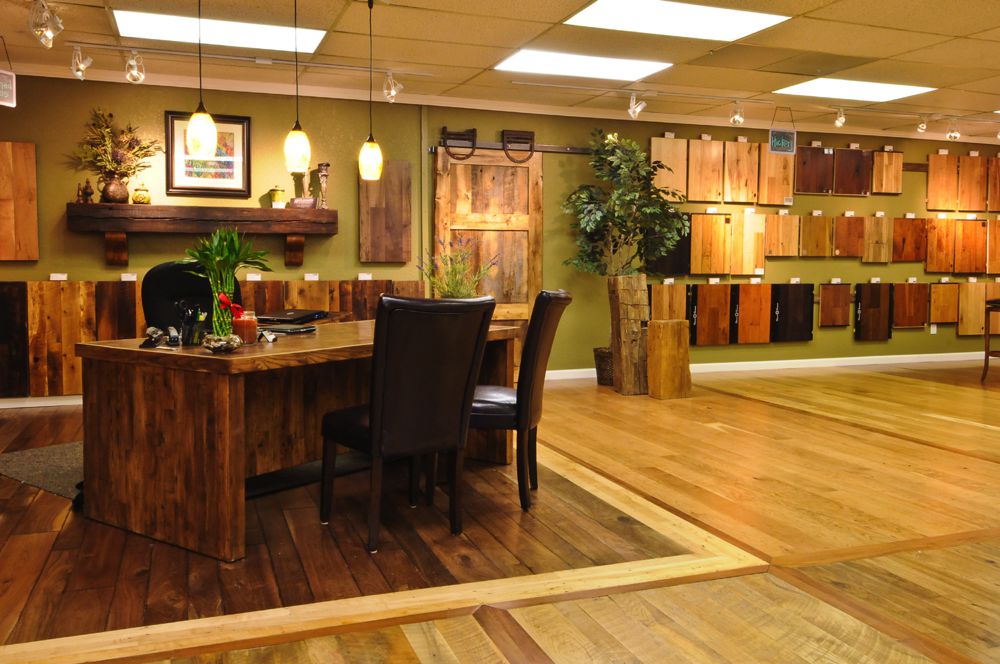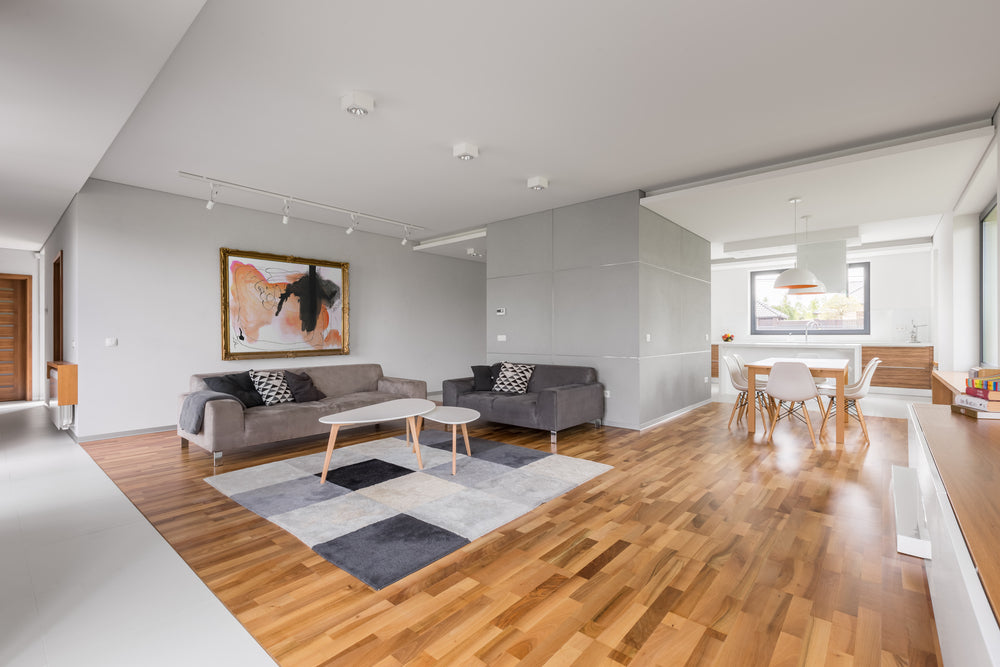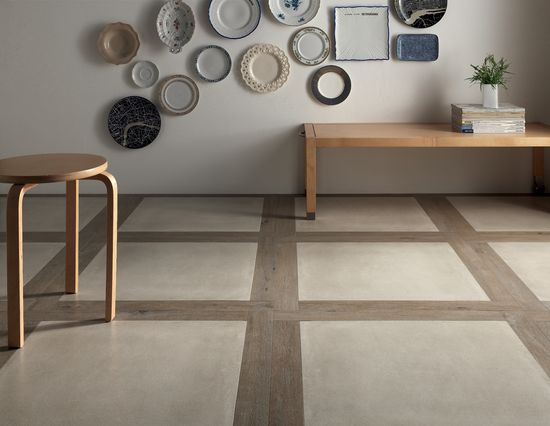Choosing the right flooring for your home is an essential task for every homeowner. Different types of flooring serve different purposes and make different statements when it comes to the interior design of your home. There are many options available to today's homeowners, including hardwood, laminate, tile, and even carpet. While many of these types of flooring can be perfect for setting the tone for a particular room, wouldn’t you like to shake things up a bit and try something new?
Guide To Mix And Match Different Types Of Flooring

Mixing and matching different types of flooring may seem like a daunting task, but the results can be eye-catching and stunning. Here are some tips on how to mix and match different types of flooring to create a beautiful and unique home.
1. Choose A Consistent Theme
The first step in mixing and matching different types of flooring is to choose a consistent theme for your home. This means selecting a colour palette, patterns, and textures that can unify your space. Consider the furniture pieces and decor in each room to make sure everything ties together nicely.
2. Limit The Number Of Different Types Of Flooring
While mixing and matching different types of flooring is a perfect way to add variety to your home's interior design, it's crucial to limit the number of different types of flooring that you use. Having too many types of flooring in one space can make the room feel cluttered and overwhelming.
3. Use A Transition Piece
Using a transition piece is a great way to create a smooth and seamless flow between different types of flooring. A transition piece is a small strip that sits between two types of flooring, making it easy to move from one surface to another. This also helps in preventing tripping or stumbling if the height of the floor changes.
4. Create Zones With Different Flooring
By using different types of flooring, you can create zones within each room in your home. For instance, you could use carpet in the sitting area and hardwood flooring in the eating area of your living room. This will give your room a visual distinction and provide a unique look to your room.
5. Be Mindful Of Light And Colour
When choosing different types of flooring for one space, it's essential to consider the amount of light in each room. If your room has limited natural light, you may want to avoid dark flooring options like rich, deep hardwoods. Lighter options are best suited in such cases. Also, if you choose to mix colours, make sure that they do not clash with each other unless that is the effect you are specifically looking to achieve.
Some examples of mixing and matching different types of flooring include:
- Using tile in the entryway and hardwood in the living room and kitchen area.
- Carpeting in the bedroom area and polished concrete for the living area of a basement remodel.
- Using natural stone for the bathroom floors, a soft wool carpet for the living room, and engineered hardwood for the rest of the house.
In conclusion, mixing and matching different types of flooring is a great way to create a unique, beautiful look for your home. Sticking to a consistent theme, limiting the number of flooring types, using transition pieces, creating zones, and being mindful of light and colour are the essential components that will help you blend different flooring options effectively. With careful consideration of each room's design, you can achieve an incredible, stylish home that is sure to impress.
What Are Some Popular Flooring Options For Mixing And Matching?

Some popular flooring options for mixing and matching include hardwood, ceramic tile, carpet, vinyl, and laminate. These materials come in various colours, patterns, and textures that can complement each other well. For instance, mixing a luxurious hardwood floor with a colourful and patterned carpet can create an elegant and cozy look for a room. Alternatively, combining ceramic tile with vinyl can create a visually stunning and practical flooring option for kitchens and bathrooms. Laminate is also versatile and can mimic the look of wood or tile, which can be paired with other materials for a cohesive look. With so many options available, mixing and matching floors can create a unique and personalized look that reflects your style.
Some popular flooring options for mixing and matching include:
- Hardwood and tile
- Carpet and hardwood
- Vinyl and carpet
- Tile and laminate
- Vinyl and tile
- Concrete and hardwood
- Vinyl and hardwood
- Laminate and tile
- Carpet and tile
- Concrete and tile
How Do You Select Flooring Options That Complement Each Other?

Here are some tips to select flooring options that complement each other:
- Consider the style of your home: Look for flooring options that match the style of your home. For example, if you have a traditional-style home, you may want a hardwood flooring option that gives a classic look.
- Contrast colours and textures: Choose complementary flooring options that have contrasting colours and textures. For instance, you can combine a dark hardwood floor with a lighter carpet.
- Keep the layout in mind: Choose flooring options that work with the layout of your home. If you have an open floor plan, you might want to consider choosing a flooring option that provides a seamless flow between spaces.
- Pay attention to the finishes: Try to select flooring options that have similar finishes or are in the same colour family. For example, you can choose a matte finish for your hardwood and a matte finish for your tile.
- Choose complementary patterns: Mixing patterns is a great way to add interest to your space. If you're opting for patterned flooring, make sure to choose complementary patterns that balance each other.
What Are Some Tips For Creating A Cohesive Look When Mixing And Matching Flooring?

- Choose flooring that is in the same colour family: This will help ensure that your flooring choices complement each other rather than clash.
- Use different textures: When mixing and matching flooring, consider using different textures to create interest and depth. For example, pair a smooth wood floor with a textured tile.
- Stick to one overarching style: Whether your home has a modern, farmhouse, or traditional style, keep that in mind when selecting your flooring. This will help ensure that your choices work together to create a cohesive look.
- Use transition pieces: If your flooring changes abruptly, use a transition piece to smooth the transition and create a seamless flow.
- Aim for balance: Make sure the different flooring choices are balanced throughout the space. This can be achieved by alternating different types of flooring, creating a pattern with tiles, or using area rugs to ground a space.
- Take cues from the architecture: Look at the architectural elements in the room, such as beams or columns, and use those as a guide for selecting flooring. This will help create a cohesive look that complements the overall style of the space.
Other flooring blog articles you may want to read:
A Guide To Home Office Style And Inspiration
Soundproof Flooring: What You Need To Know
What Is NXT Level Flow Self-Leveling Underlayment?
The Best Vinyl Flooring Article Ever Written. Everything I Wish I Knew Before I Bought A Vinyl Floor
